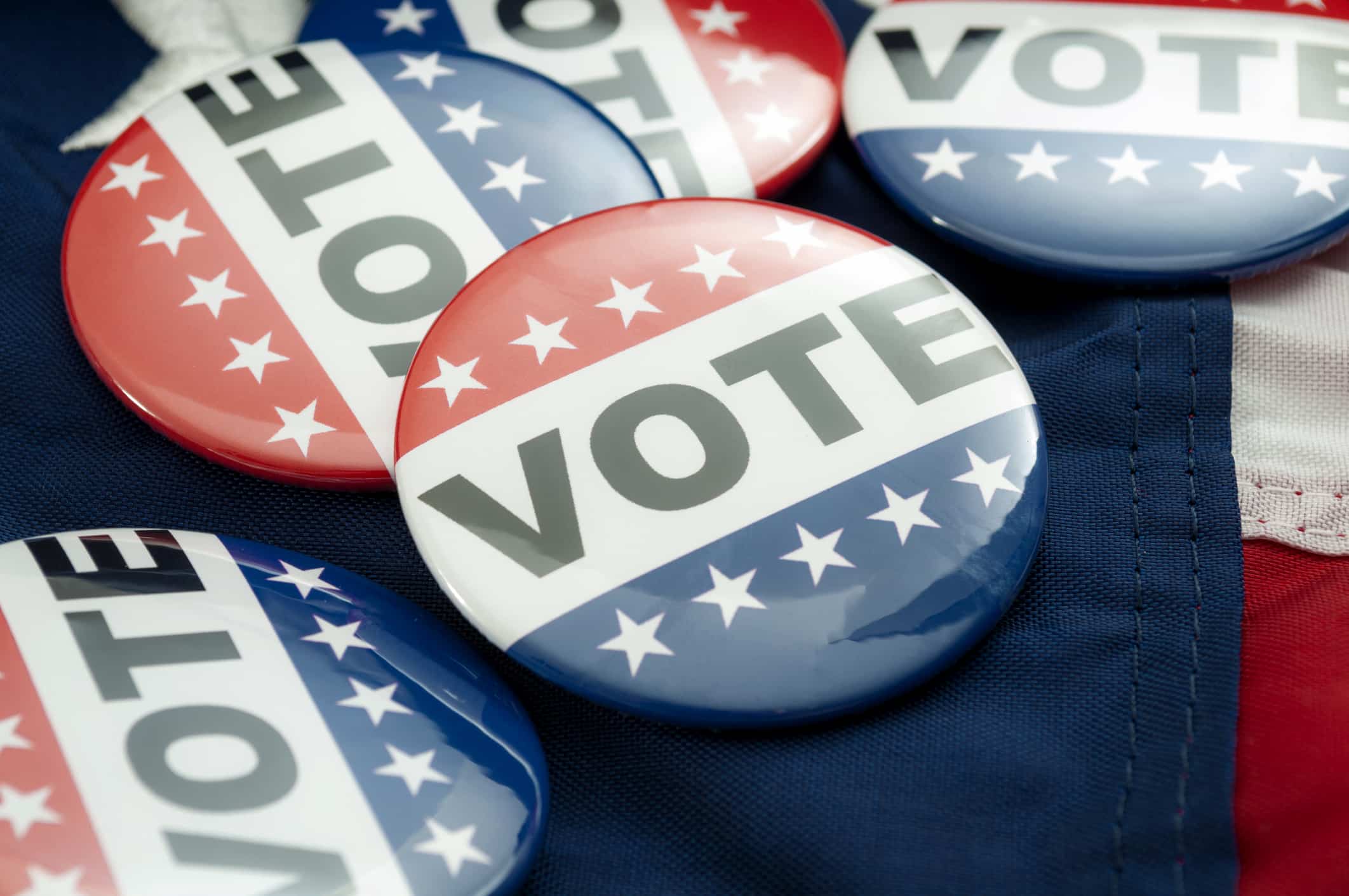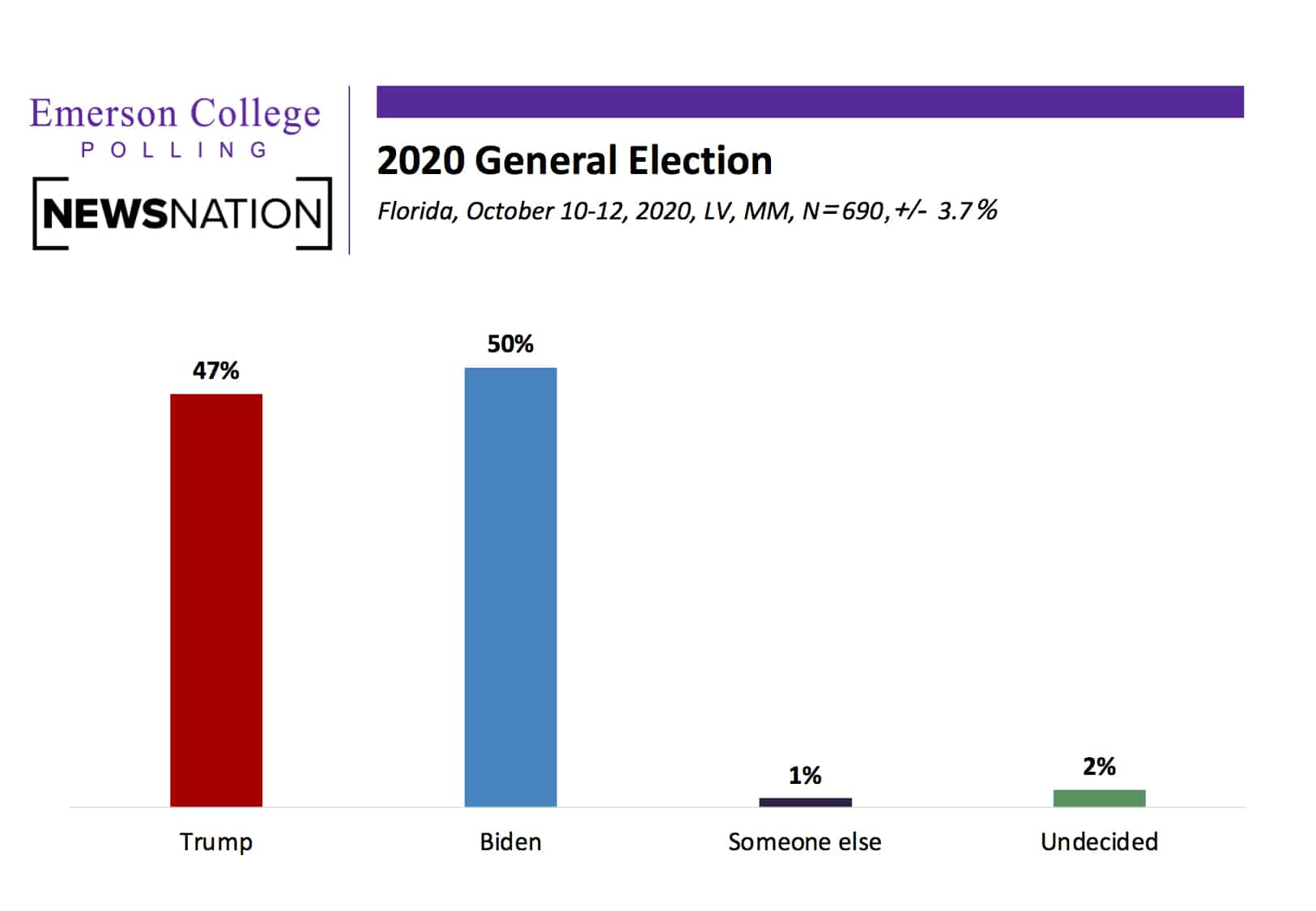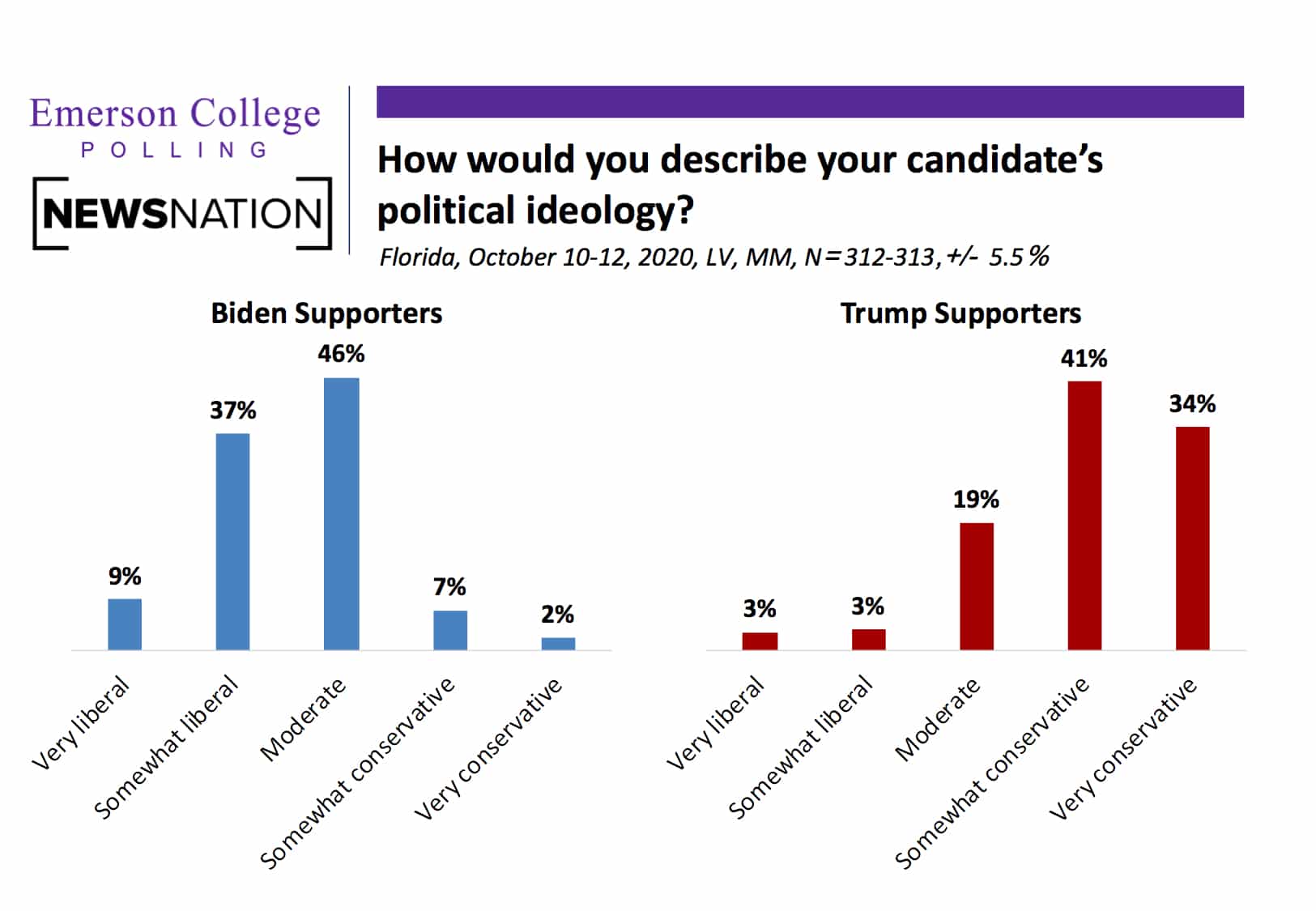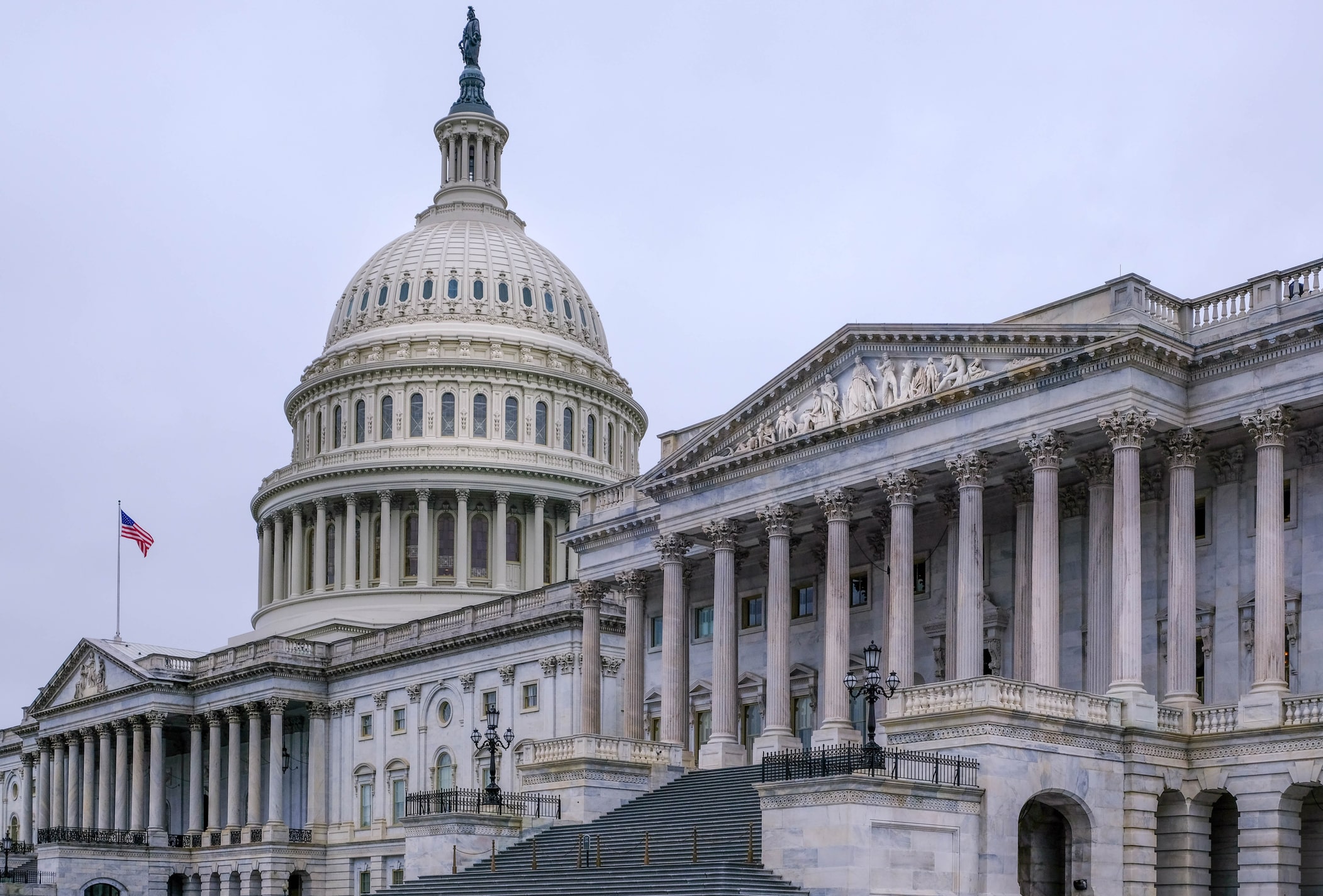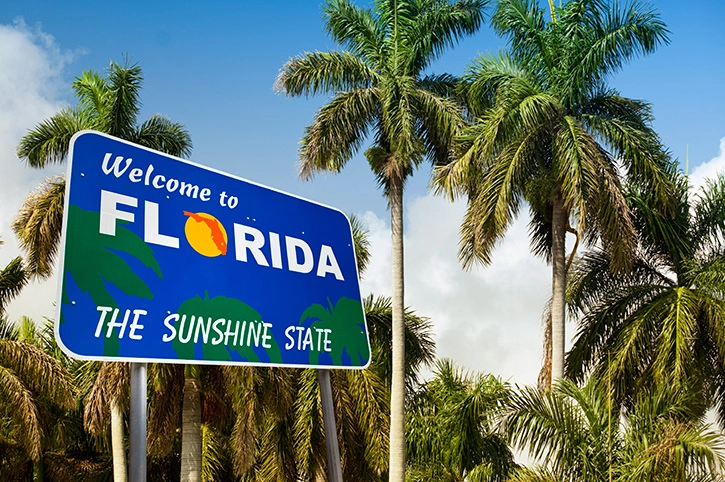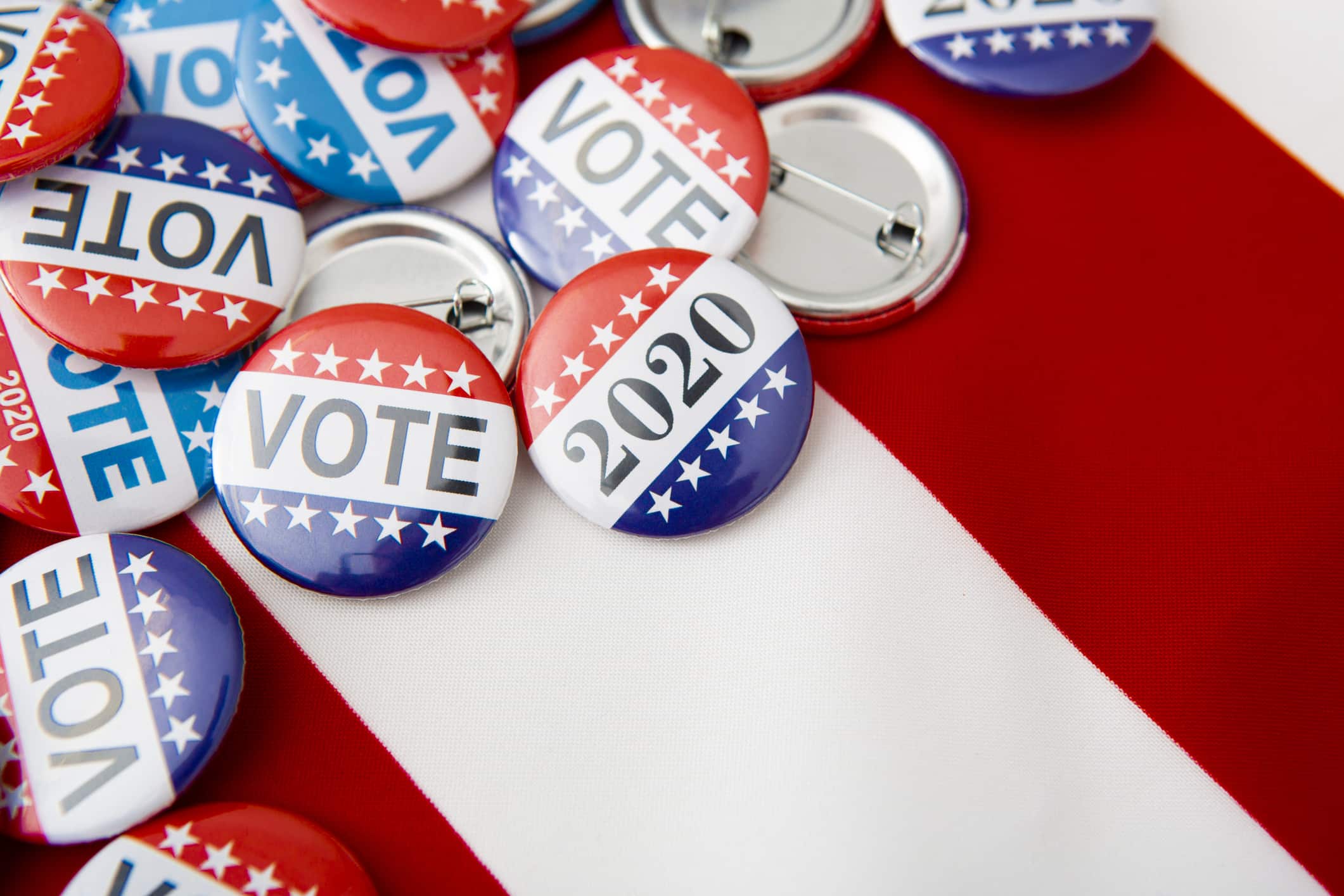With just over three weeks before the election, President Trump is trailing former Vice President Joe Biden in Florida by three percentage points, 47% to 50%. Two-percent of voters are undecided, and one percent plan to vote for someone else.
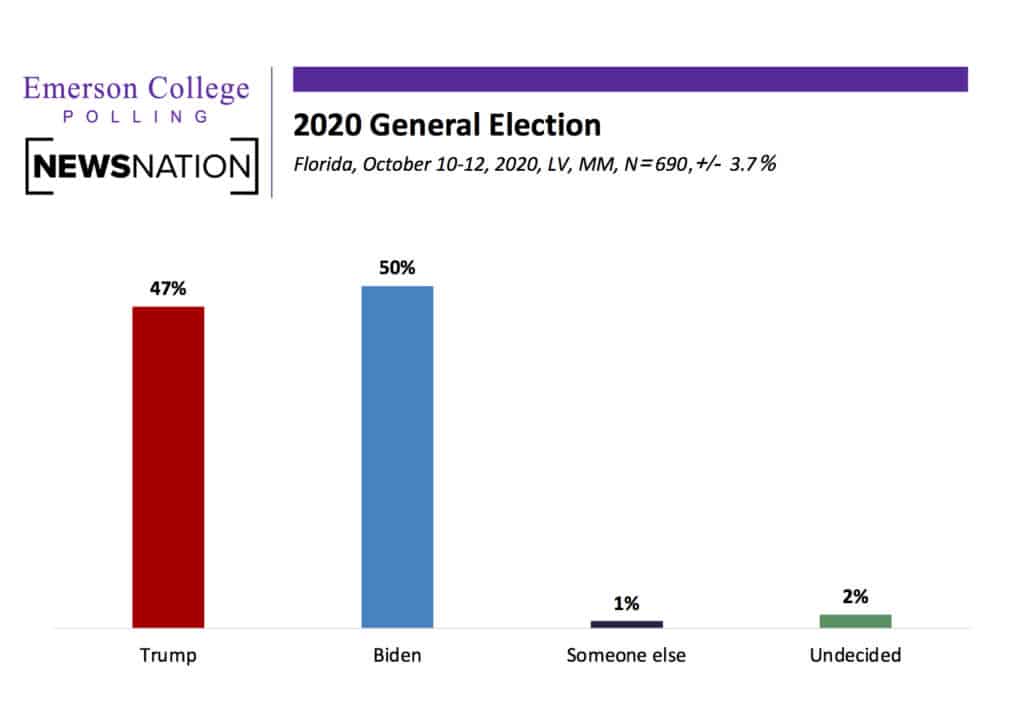
When it comes to how voters plan to cast their ballot this November, 35% plan to vote in-person on election day, 30% plan to vote by mail, 20% plan to vote in-person before election day, and then remaining 14% have already voted. Of those supporting Biden, 20% have already voted, 44% plan to vote by mail, 19% plan to vote in-person early, and 17% plan to vote on election day. Of those supporting the President, 53% plan to vote on election day, 23% plan to vote in-person early, 15% plan to vote by mail, and 9% have already voted.
Spencer Kimball, Director of Emerson College Polling said “while it looks like voters are shifting away from election day voting and toward early voting, only 4% of the sample reported voting for the first time suggesting that the Florida turnout should not look considerably different from 2016.”
Voters in the Sunshine State are evenly divided regarding who they expect to win in November, with 50% saying Trump, and 50% saying Biden.
The economy leads as the most important issue for voters in deciding their vote for president with 38%, followed by healthcare with 15%, COVID-19 response at 14%, social justice at 11%, Supreme Court at 7%, and climate change at 5%. Nine percent (9%) of those polled said something else was their most important issue.
For Biden voters, healthcare ranks as the most important issue at 26%, followed by the COVID-19 response at 22%. For Trump voters, a majority of 64% say that the economy is the most important issue, followed by 13% who say the Supreme Court.
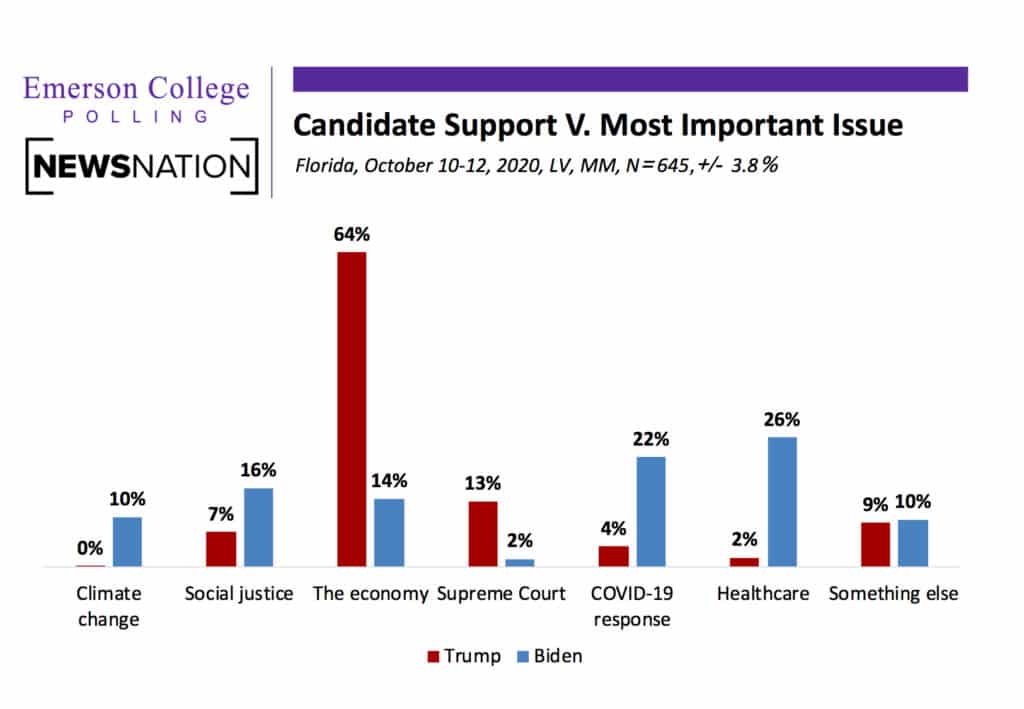
Regarding the threat of COVID-19, a plurality (47%) of Florida voters view the virus as a major threat to public health in the US. Thirty-two percent (32%) see it as a moderate threat, 19% see it as a minor threat, and 2% see it as not a threat at all. Among Biden voters, 78% see the virus as a major threat. Among Trump voters, the plurality, 46%, see it as a moderate threat, and 36% view the virus as a minor threat.
A plurality of Floridian voters overall sees both candidates as ideological extremes; a plurality (43%) views President Trump as “very conservative”, compared to 31% who say he is “somewhat conservative”. For Vice President Biden, a plurality (40%) view him as “very liberal”, while 26% view him as “somewhat liberal” and 26% view him as “moderate”.
However, within Biden’s own voters, a plurality (46%) describes Biden as “moderate”, followed by 36% who say he is somewhat liberal, and 9% who say he is very liberal. Among Trump voters, a plurality (41%) describe Trump as “somewhat conservative”, followed by 34% who say he is very conservative, and 19% who say he is moderate.
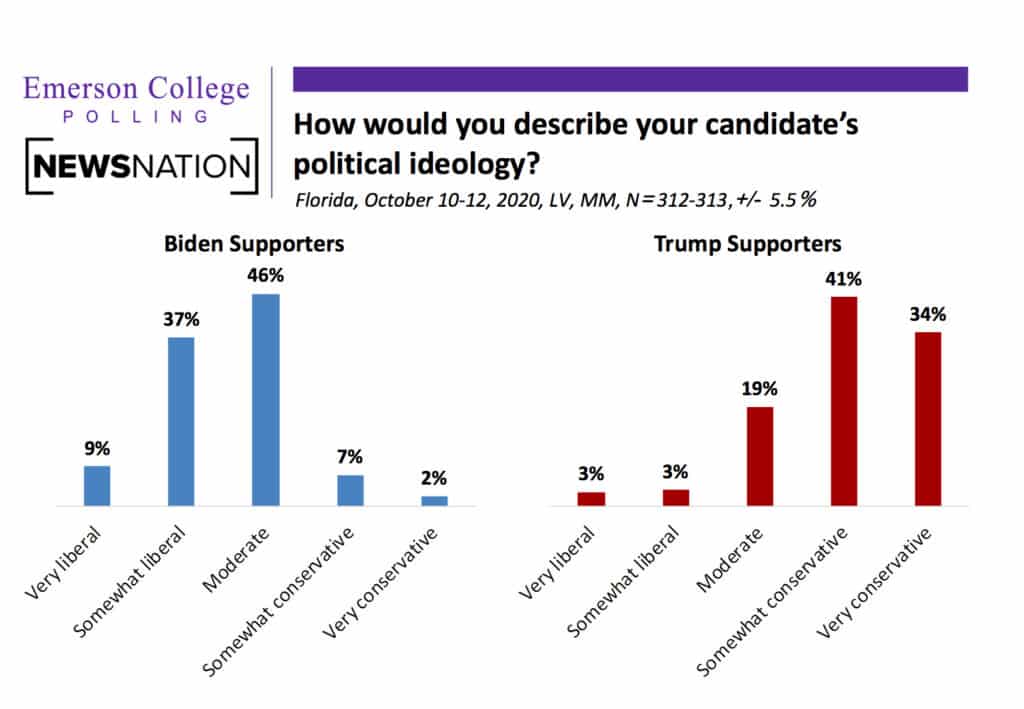
President Trump has a 50% disapproval rating for the job he is doing as President and 48% approval. Governor Ron DeSantis has a split approval: 44% approve of the job he is doing as governor and 44% disapprove, 13% were neutral.
When asked how excited they are to support their chosen candidate, 45% of Biden supporters reported feeling extremely excited, 21% said they are very excited, 27% as mildly excited, and 8% said they were not that excited. As for supporters of President Trump, 64% reported they are extremely excited, 19% as very excited, 10% as mildly excited, and 7% as not that excited.
Other issues
The plurality (41%) of Florida voters think fans should not be allowed to attend football games in-person this season, 36% think they should be able to, and 22% were unsure.
A majority of Florida voters, 55%, plan to vote for the constitutional amendment to increase the state’s minimum wage to $15 per hour while 33% plan to vote against and 12%are undecided.
Ninety-five percent (95%) of Florida voters feel the voting process in the state is somewhat/very easy while 5% think it is somewhat/very difficult.
Caller ID
The Florida Emerson College/NewsNation poll was conducted October 10-12, 2020. The sample consisted of likely registered voters in Florida, n=690, with a Credibility Interval (CI) similar to a poll’s margin of error (MOE) of +/- 3.7 percentage points. The data sets were weighted by gender, age, race, and education based on 2016 voter turnout modeling. It is important to remember that subsets based on gender, age, party breakdown, ethnicity, and region carry with them higher margins of error, as the sample size is reduced. Data was collected using Interactive Voice Response (IVR) system (n=241), SMS-to-web texting (n=185) and an online panel provided by MTurk (n=264).



